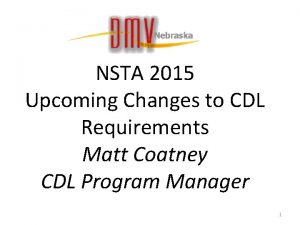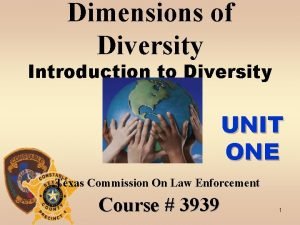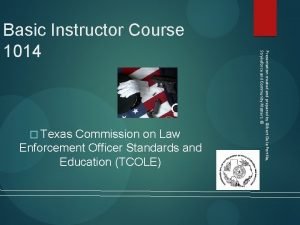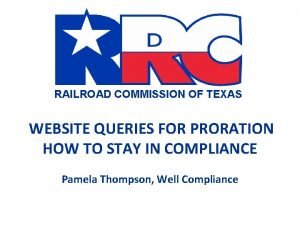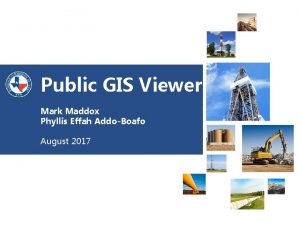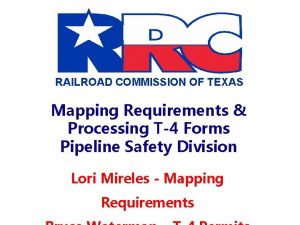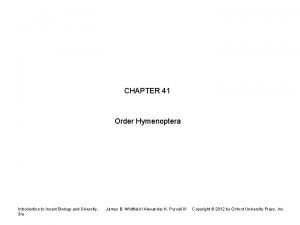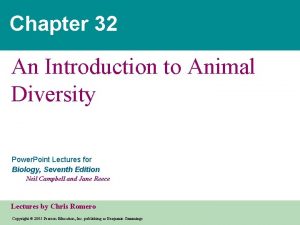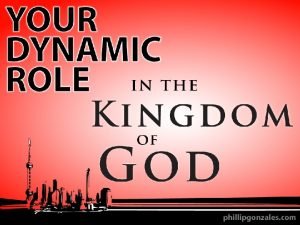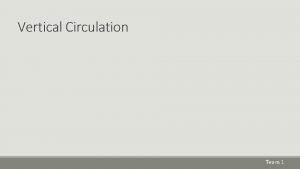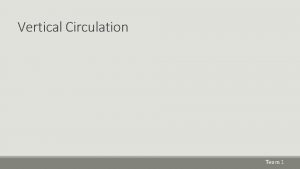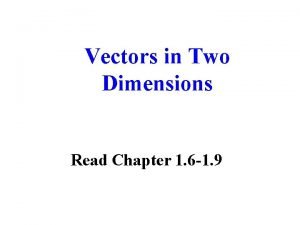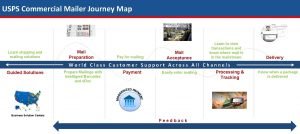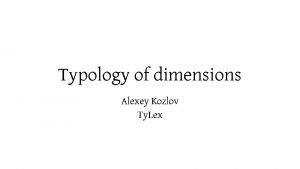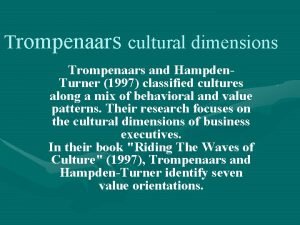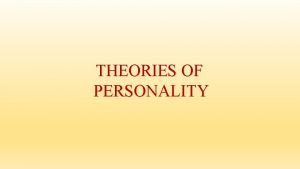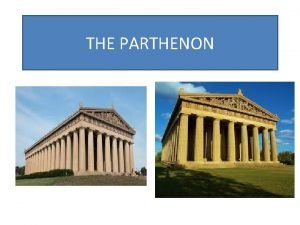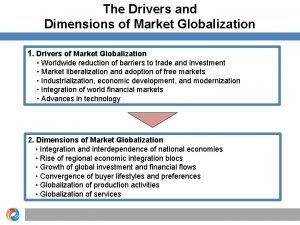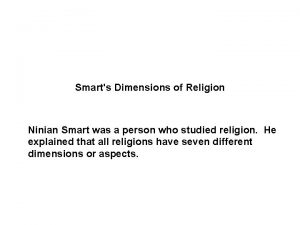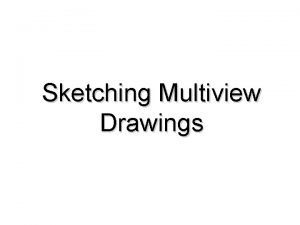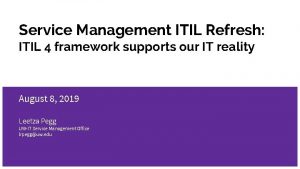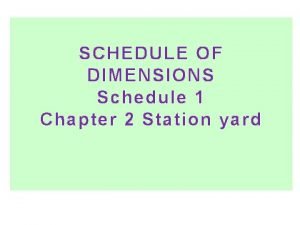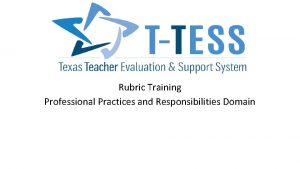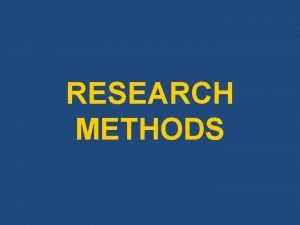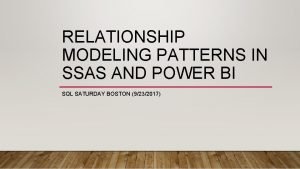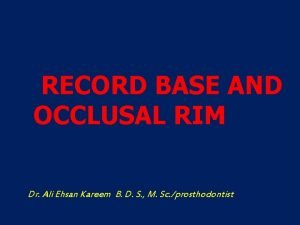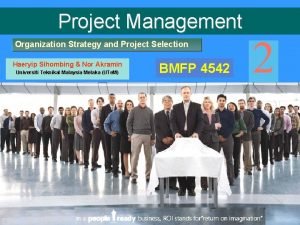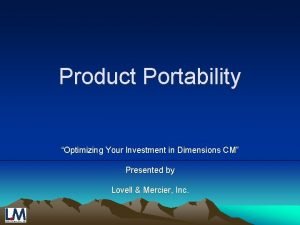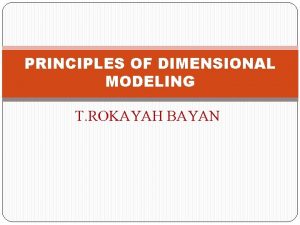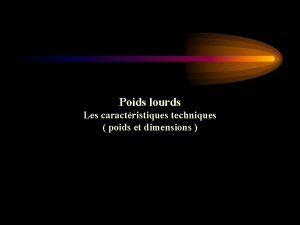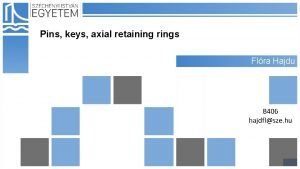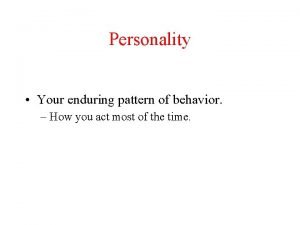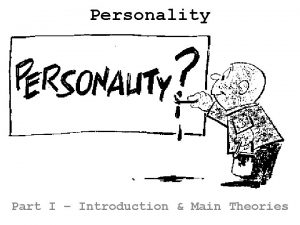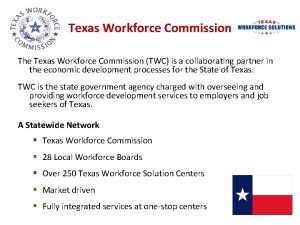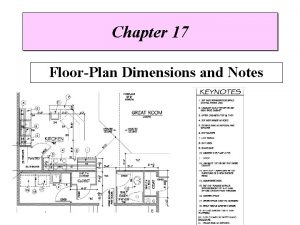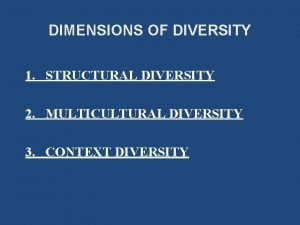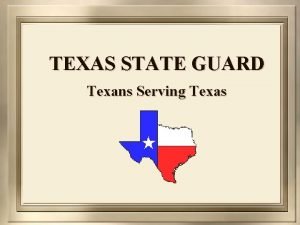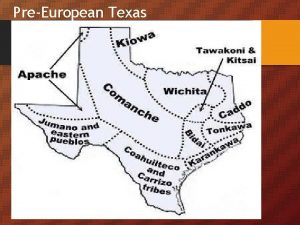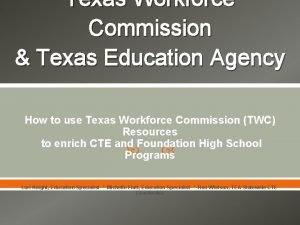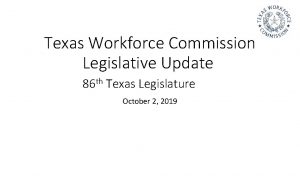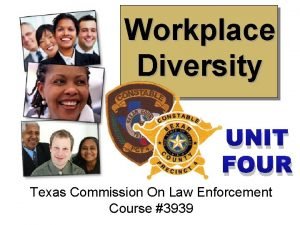Dimensions of Diversity Introduction to Diversity Texas Commission


















































- Slides: 50

Dimensions of Diversity Introduction to Diversity Texas Commission on Law Enforcement Officer Standards and Education 1

Unit Goal I • To increase awareness of the various dimensions of diversity Every culture teaches its young Every family shares its knowledge All of us are lifelong learners 2

“Personal and social identity, expressed through language and culture, is formed by this continuous interplay of knowledge and learning as we move through the different stages of life. ” UNESCO 3

7 Underlying Principles of Diversity 1. Diversity is an inside job, it is not about them 2. Diversity goes beyond race and gender 3. No one is the target of blame for current or past inequalities 4. Human beings are ethnocentric 5. The human species resists changes, continuing to seek homeostasis 6. Human beings find comfort and trust in likeness 4

Our heritage belongs to all Our world heritage is our shared heritage. NESCO 5

1. 1. Define the term “diversity” “Diversity is the term used to describe the relative uniqueness of each individual in the population…the state of being diverse. ” 6

Diversity is a set of conscious practices that involve: • Understanding and appreciating interdependence of humanity, cultures, and the natural environment • Practicing mutual respect for qualities and experiences that are different from our own • Understanding that diversity includes not 7 only ways of being but also ways of

Continued… • Recognizing that personal, cultural, and institutionalized discrimination creates and sustains privileges for some while creating and sustaining disadvantages for others • Building alliances across differences so that we can work together to eradicate all forms of discrimination wa State University Io 8

1. 2. Discuss the term “human diversity” Encompasses anything that makes humans special and different 9 reported most noticed in our society: • • • Skin Color Gender Age Appearance Facial Expression • • Eye Contact Movement Personal Space Touch 9

1. 3. List “dimensions of diversity” • • Age Ethnicity Gender Physical Abilities/Qualities • Race • Sexual orientation • Job Classification • • Military Experience Parental Status Religious Beliefs Work Experience Geographic Locations Socioeconomic Status And the list goes on… 10

1. 4. Describe three powerful trends that highlight diversity in twenty-first century society Diversity became an issue with the development of 3 powerful trends in our society: Trend 1: The global market in which American corporations must now do business became highly competitive Trend 2: The makeup of the United States population began changing dramatically Trend 3: Individuals began to celebrate their 11 differences instead of compromising their

1. 4. 1. Define the Global Market Trend 1 To stay competitive in the world market: • Products must be designed and marketed to meet needs of people • People need to develop an understanding and appreciation of cultures 12

1. 4. 2. Discuss the United States changing demographics Trend 2 Changing demographics: • By the year 2050: – Less than 53% of population White – 16% African American – 23% Hispanic Origin – 10% Asian and Pacific Islander – 1% American Indian, Eskimo, and Aleut 13

• By the year 2056: – People of color are expected to become the new majority • In addition: – The fastest growing age group: 75 and older – In 2008: 48% increase in workers 55 and older – By 2025, the number of elderly will double 14

• Misc. Statistics: – One in every 7 Americans speaks a language other than English in their homes – An estimated 6% of the population is gay/lesbian – Persons with disabilities make up the largest minority group: 15% of US population 15

1. 5. Compare a “melting pot” vs. a “mosaic” society Trend 3 • Changing concepts – Traditional American approach to diversity: assimilation – Cultural differences homogenized – Problem: classifies differences as inferior – New Perspective of mosaic: encouraged to be proud and maintain cultural heritage and uniqueness – Multicultural: no distinct culture as American 16

1. 6. Define the term “inclusion” “…a sense of belonging: feeling respected, valued for who you are; feeling a level of supportive energy and commitment from others so that you can do your best work. ” Miller and Katz 2002 17

1. 7. Discuss the concept of three dimensions of Global Inclusion • The Human Perspective • The Cultural Perspective • The Workplace Perspective These inclusions capture the basic attributes that make us who we are as individuals 18

The Human Perspective • Inclusions that might be detected visibly • Physical or psychological in nature • Examples: Age, ethnicity, gender, physical abilities, race, and sexual orientation 19

The Cultural Perspective • Inclusions that are core elements • Define us as individuals • Influence how we function in all areas of our lives • Less visible • Aspects of an individuals diversity • Examples: Economic class, education, geographic location, language, life experience, military experience, marital 20

The Workplace Perspective • Inclusion of diversity from current and past experiences in the work environment • Examples: Your level of autonomy, empowerment, decision making authority, and functional level or classification 21

1. 8. Describe the concept of the four layers of diversity Personality: All aspects of personality Internal: Aspects not easily changed External: Aspects that can be altered Organizational: 22

1. 9. Illustrate the concept of primary and secondary dimensions of diversity Primary dimensions: • Unalterable or easy to change • Together shape basic self-image and fundamental view of world • Form core of expectations of others in personal and work life • Filters that change and modify life’s experiences 23

Secondary dimensions: • Important in shaping us and have measure of control to any change • Serve as independent influences on selfesteem and self-definition • Influences vary with who we are or stage in life, and changes experienced 24

1. 10. Explain “Fairness vs. Equal Treatment” Many people think that fairness means treating everyone the same. How does treating everyone the same work for a diverse staff? 25

1. 11. Summarize the past, present, and future dimensions of diversity • Past • Present • Future 26

End of Unit 1 27

Unit Goal 2. 0. To examine one’s own cultural diversity and how your identity impacts your relationships with others “Cultural landscapes testify to the creative genius, social development, and the imaginative and spiritual vitality of humanity. They are part of our collective identity. ” UNESCO 28

2. 1. Define the term culture Values, beliefs, and behaviors common to a large group of people to include: • Shared language • Folklore • Ideas and thinking patterns • Communication styles • Similar “truths” and life expectations 29

The definition of culture includes: • Body of learned beliefs, traditions, principles, and guides for behavior that are shared among members of a particular group • Culture serves as a road map for both perceiving and interacting with the world • It is not inherited but instead shaped by the social context in which we learn 30

2. 2. Discuss the Cultural Perspective • Comprised of core elements that help define us as individuals • Examples: – – – Economic class Education Geographic location Language Life experience – Military experience – Marital Status/Domestic Partnership – Parental Status – Religion – Values 31

2. 3. Explain where our “cultural programming” comes from • Culturally programmed by age 3 • Born into culture and programmed in our belief system • Acceptance without question 32

Additionally: • Culture determines our behavior and attitudes • No one is culture free • Most cultural rules are never written • We interpret other people’s behavior through our own cultural software 33

34

2. 4. Describe your cultural “road map” as it relates to your current behaviors and attitudes Culture can be defined as the body of learned beliefs, traditions, principles, and guides for behaviors that are shared among members of a particular group. Culture serves as a “road map” for both perceiving and interacting with the world. 35

2. 5. Explain stereotypes and their role in cultural diversity • Misinformation • “Mental Tapes” • “Mental File Process 36

2. 6. List examples of “cultural rules” • Each culture sets expectations or “societal rules” for expected behavior • Cultural rules provide a framework for imparting meaning • We learn these rules as children • By following these rules we reduce conflict 37

Many of these rules become internalized subconsciously and enter our day to day behavioral actions. They become habits. Examples: • Ethics and habits • Making friends or enemies • Sense of time and punctuality • Male/female roles and relationships • Manners and showing respect for others 38

These cultural rules are so ingrained that when we see someone violating or behaving contrary to one of these rules we interpret the behavior as wrong. List some examples of these rules… 39

2. 7. Describe the strategies in building “cross-cultural competencies” • Effectiveness across national, state, organizational, team and interpersonal barriers • Successful cross-cultural players are generally flexible and possess a broad behavioral repertoire 40

2. 8. Demonstrate “cultural filters” on automatic Cultural filters act in the following ways: • Automatic responses • Refer to our “mental file” instead of information gained from knowledge or experience • Reticular Activating System (RAS) 41

2. 9. Describe the Cultural orientation Model Comprised of following qualities: • • • Environment Time Action Communication Space • • • Power Individualism Competitiveness Structure Thinking 42

2. 10. Discuss the development of Diversity Competence These competencies consist of 4 areas: • • Awareness Knowledge Skills Action/Behavior 43

Awareness… • • • Recognizing differences as diversity Respect benefits of differences Acceptance of differences Understand historic effect Clear sense of personal culture Understand personal impact of organizational culture • Recognize similarities 44

Knowledge… • • • Factual information Identify differences Exposure Learn Explore 45

Skills… • • • Take personal responsibility Point of view Cross-cultural communication Problem-solving Conflict management Work effectively 46

Action/Behavior… • Teach • Show patience • Develop personal plan 47

2. 11. Solve scenario problems on “culture clash” Class Exercise 48

2. 12. Summarize how culture relates to the dimensions of diversity model as described in Unit Goal I • • • Better understanding Recognize Appreciation Point of reference Convey message 49

END Part 1 Completed 50
 Defects of present curriculum
Defects of present curriculum Graduated commission jobs
Graduated commission jobs Alley dock backing
Alley dock backing Primary dimensions of diversity
Primary dimensions of diversity Texas commission on law enforcement
Texas commission on law enforcement Texas railroad commission completions query
Texas railroad commission completions query Texas state plane zones
Texas state plane zones Tvc veterans education
Tvc veterans education Texas railroad commission pipeline permits
Texas railroad commission pipeline permits Texas railroad commission online queries
Texas railroad commission online queries What is ecosystem biodiversity
What is ecosystem biodiversity Ecosystem jigsaw activity
Ecosystem jigsaw activity Biology
Biology Introduction to animal diversity
Introduction to animal diversity Intro paragraph layout
Intro paragraph layout Herod's temple facts
Herod's temple facts Elevator dimensions
Elevator dimensions Elevator dimensions
Elevator dimensions Vectors in 2 dimensions
Vectors in 2 dimensions Docmail access dimensions integration
Docmail access dimensions integration Class indicator
Class indicator Dimensions of universal health coverage
Dimensions of universal health coverage Asam dimensions
Asam dimensions Asam severity ratings
Asam severity ratings Class b airspace dimensions
Class b airspace dimensions Arma 3 whiteboard dimensions
Arma 3 whiteboard dimensions Trompenaars and hampden-turner cultural dimensions
Trompenaars and hampden-turner cultural dimensions Personality theories
Personality theories Parthenon column dimensions
Parthenon column dimensions Drivers of market globalization
Drivers of market globalization Fountain model in software engineering
Fountain model in software engineering Ninian smarts dimensioner
Ninian smarts dimensioner What is multiview drawing
What is multiview drawing 4 dimensions of service management
4 dimensions of service management Schedule of dimensions
Schedule of dimensions T-tess domains summary
T-tess domains summary Time dimension in research sample
Time dimension in research sample Role playing dimension power bi
Role playing dimension power bi Occlusal rim uses
Occlusal rim uses Six dimensions fluency rubric
Six dimensions fluency rubric Vy=gt
Vy=gt Project portfolio matrix bread and butter
Project portfolio matrix bread and butter Product dimensions in cm
Product dimensions in cm Dimensions of universal health coverage
Dimensions of universal health coverage Principles of dimensional modeling
Principles of dimensional modeling Two dimensions of political ideologies
Two dimensions of political ideologies Largeur maximale camion
Largeur maximale camion 406 woodruff key dimensions
406 woodruff key dimensions Physics: principles and problems chapter 6 answers
Physics: principles and problems chapter 6 answers Hans and sybil eysenck contribution to psychology
Hans and sybil eysenck contribution to psychology Personality
Personality


